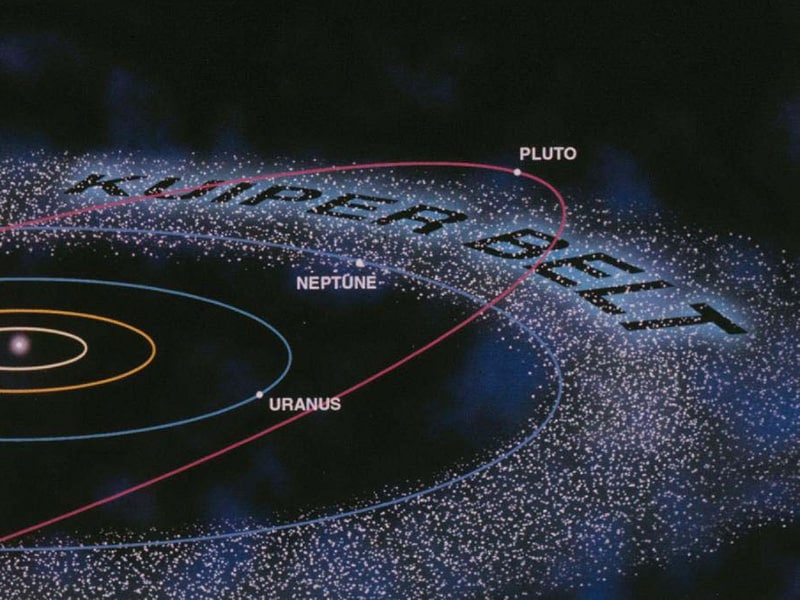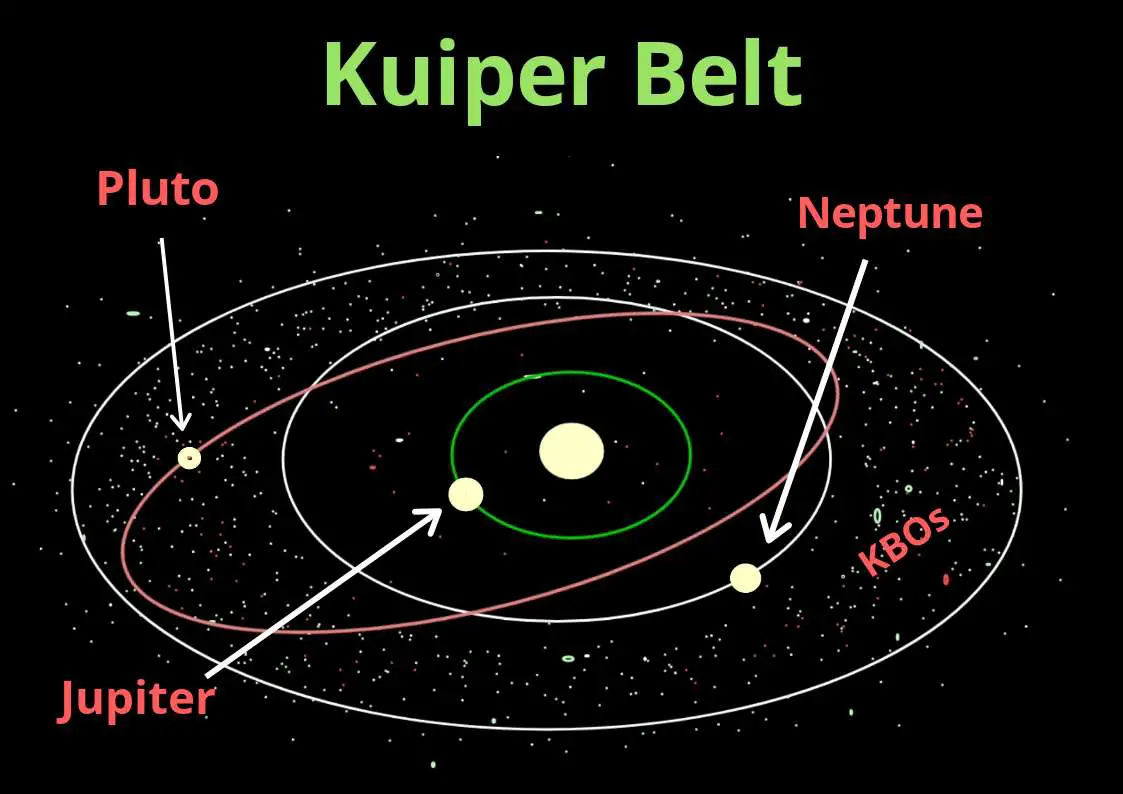The kuiper belt contains hundreds of thousands of icy objects that are larger than 62 miles 100km wide as well as over one trillion comets

The Fascinating Kuiper Belt: Home to Countless Icy Objects and Trillions of Comets

The Kuiper Belt, a vast and mysterious region of the outer solar system, is believed to contain hundreds of thousands of icy objects measuring over 62 miles (100km) in width. Additionally, it is estimated to house a staggering one trillion comets. This unique and intriguing celestial highway has captivated the attention of scientists and space enthusiasts around the world.
The Kuiper Belt, pronounced “KI-per,” is named after Dutch-American astronomer Gerard Kuiper, who first theorized the existence of this region in 1951. It is a disk-shaped region that extends beyond the orbit of Neptune and stretches about 20 times farther from the Sun than Neptune does. This vast distance makes it a challenging area to explore, but modern space missions have started shedding light on its wonders.
Scientists believe that the Kuiper Belt is composed mainly of frozen volatiles, such as methane, ammonia, and water. These ices are remnants from the early days of our solar system and hold valuable information about its formation and evolution. The objects within the belt can be classified into two main categories: dwarf planets like Pluto and Eris, and smaller icy bodies known as Kuiper Belt Objects (KBOs).

Kuiper Belt Objects (KBOs) are small, rocky bodies made up of a mixture of rock, metals, and ices. They can range in size from just a few miles in diameter to objects that rival the size of dwarf planets. The most famous KBO is undoubtedly Pluto, which was reclassified as a dwarf planet in 2006 due to the discovery of many similar-sized objects in the Kuiper Belt.
The presence of such a large number of icy objects and an incredible abundance of comets within the Kuiper Belt gives astronomers a unique opportunity to study the ancient building blocks of our solar system. Comets, often referred to as “dirty snowballs,” are made up of a nucleus composed of ice, dust, and organic compounds. They have highly elliptical orbits, which occasionally bring them close to the Sun, resulting in their characteristic glowing coma and tail.
The New Horizons mission, launched by NASA in 2006, provided us with stunning images and valuable data about Pluto and its moons during its historic flyby in 2015. This mission offered invaluable insights into the geology, atmosphere, and surface composition of these distant icy worlds. It also helped scientists understand the complex interactions between the Sun, comets, and other icy bodies in the Kuiper Belt.
As we continue to explore and study the Kuiper Belt, we uncover more secrets about the origin and evolution of our solar system. The abundance of icy objects and the vast population of comets make this region a treasure trove of information. The findings from missions like New Horizons and ongoing research allow us to piece together the cosmic jigsaw puzzle, enhancing our understanding of the universe we inhabit.
To learn more about the Kuiper Belt and stay updated on the latest discoveries, visit NASA’s overview page on the Kuiper Belt.
Tags
Share
Related Posts
Quick Links
Legal Stuff

